Abstract
Hardy, Paul H., Jr. (Johns Hopkins University, Baltimore, Md.) and E. Ellen Nell. Influence of osmotic pressure on the morphology of the Reiter treponeme. J. Bacteriol. 82: 967–978. 1961.—Spherical bodies similar to those that develop spontaneously in cultures of treponemes, and which have been considered by many investigators to represent one stage in a complex life cycle of these organisms, can be produced rapidly with the Reiter treponeme by merely altering the medium in which the organisms are suspended. Osmotic pressure appears to be the major factor responsible for this effect, as shown by the observation that treponemes suspended in NaCl solutions of 0.15 to 0.10 m retain their spirochetal morphology, whereas organisms suspended in more dilute salt solutions rapidly become spherical. Moreover, the concentration of salt appears to influence both the rate and extent of sphere formation. Further evidence that osmotic pressure is primarily involved is demonstrated by the selectivity of the conditions under which spheres form. Treponemes suspended in various 0.3 osmolal solutions either retain their spiral shape or form spheres, depending upon the nature of the solute. Viability studies of suspensions containing predominantly spherical forms, which have developed spontaneously or have been artificially induced, have failed to produce evidence that the resulting growth of treponemes came from the spheres. It is concluded, therefore, that the naturally occurring spheres probably arise as the result of an osmotic imbalance which develops between the cells and their environment, and that the spheres represent degenerative forms rather than an intermediate stage in a life cycle.
Full text
PDF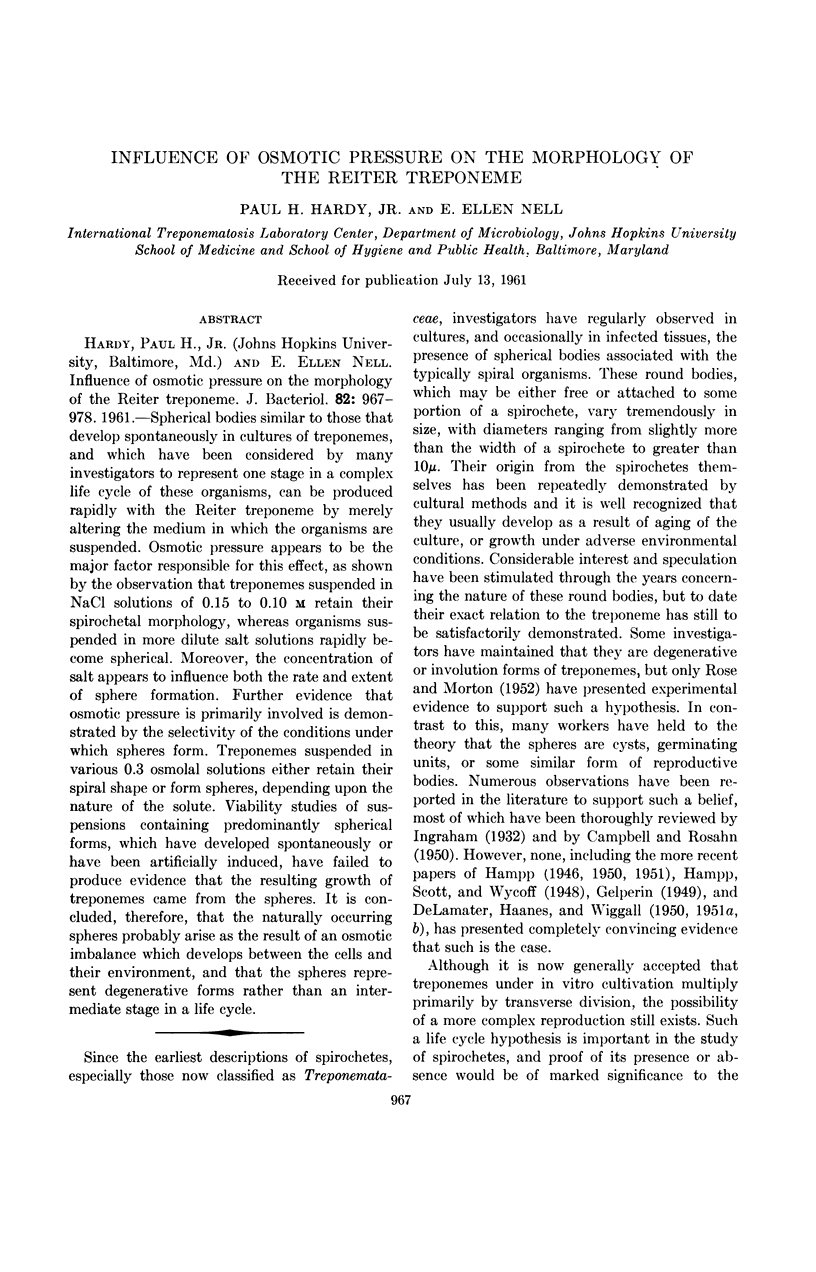
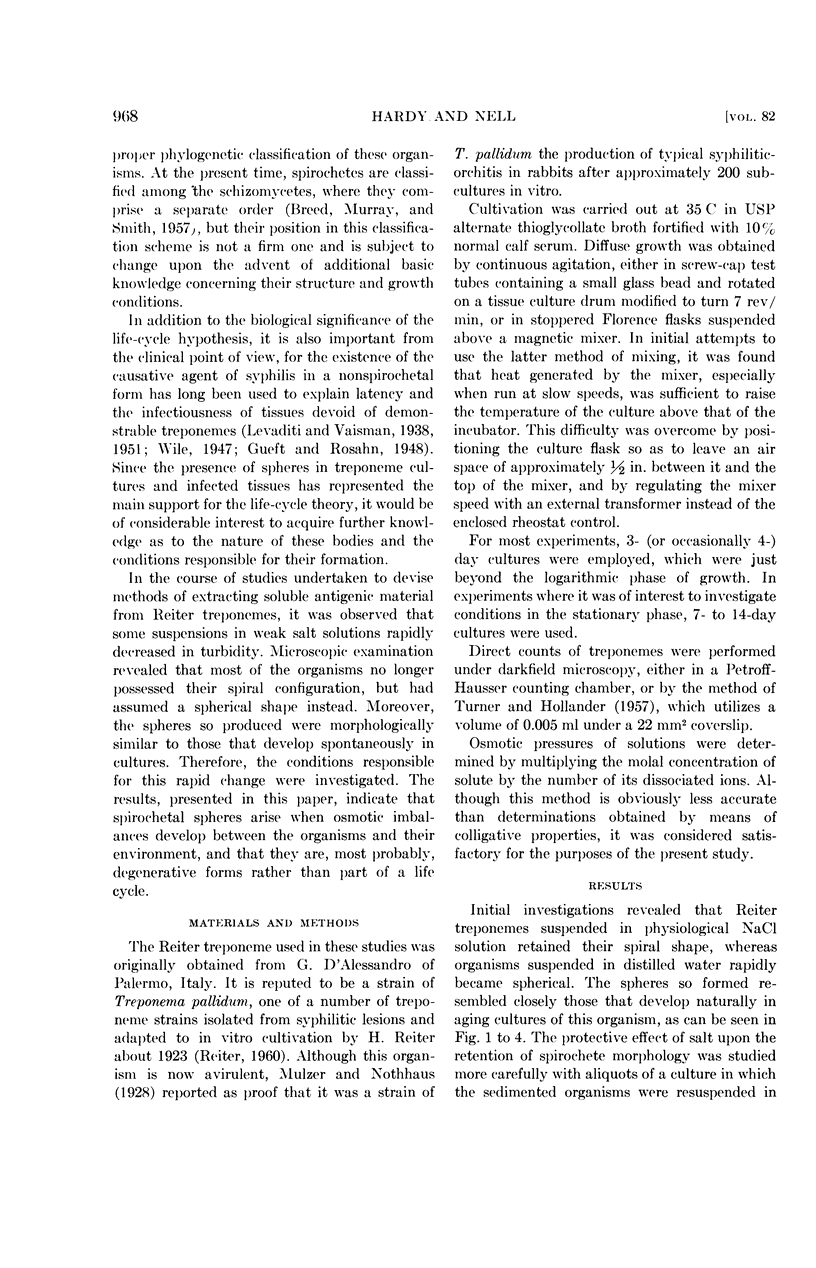
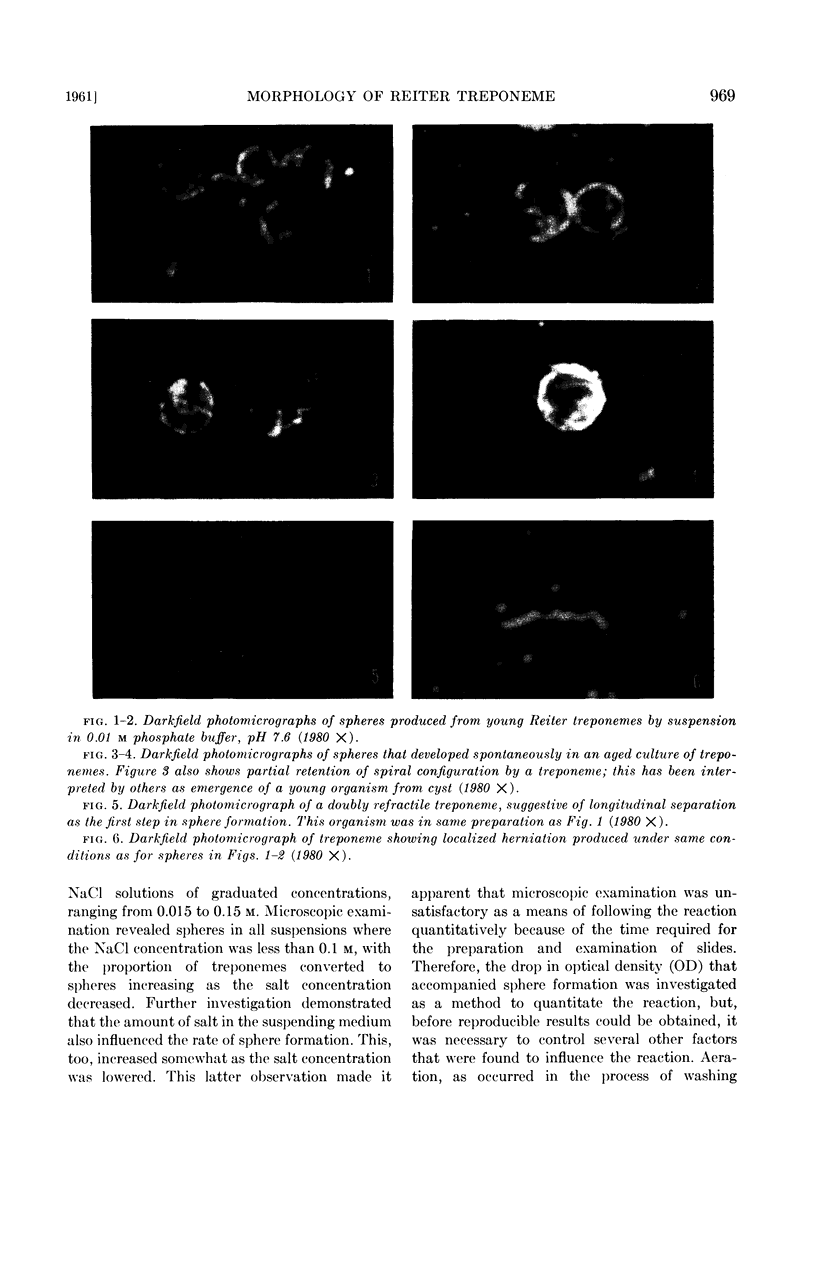
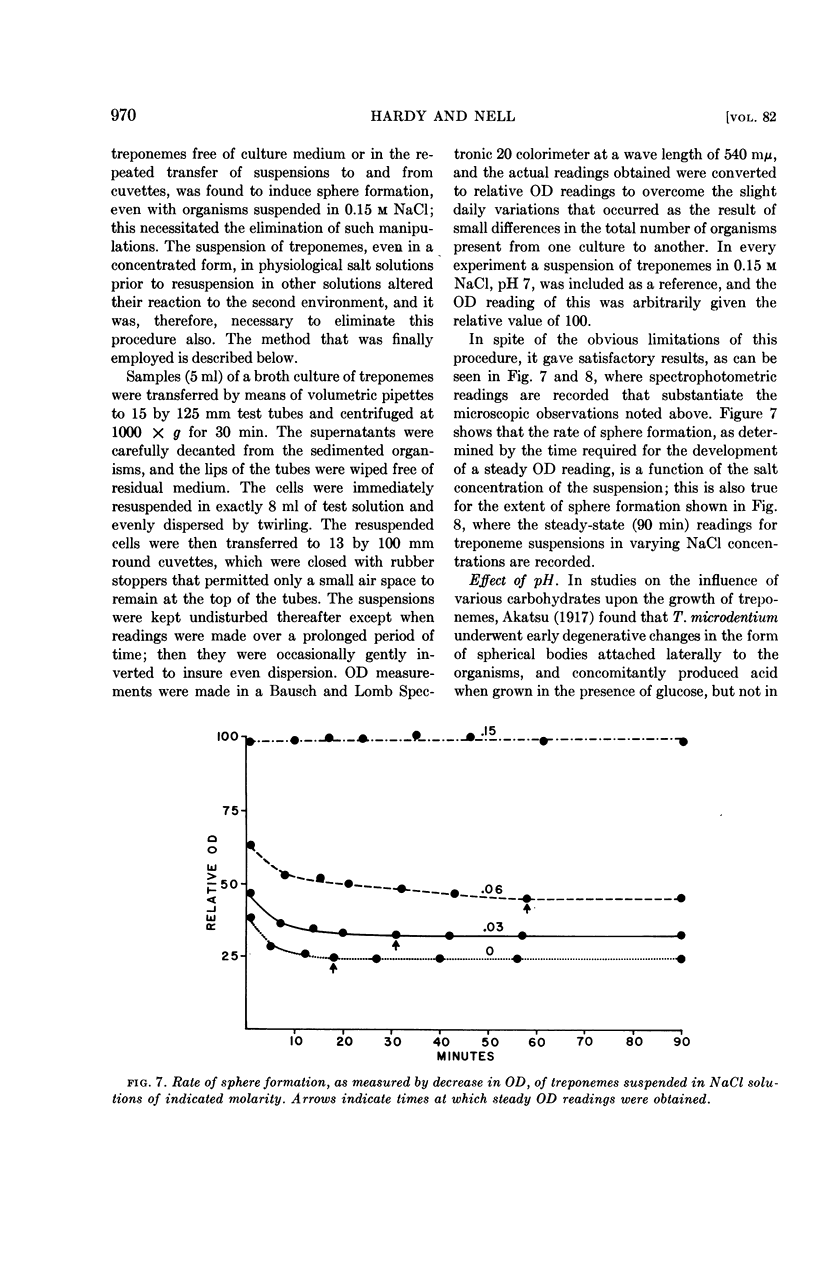
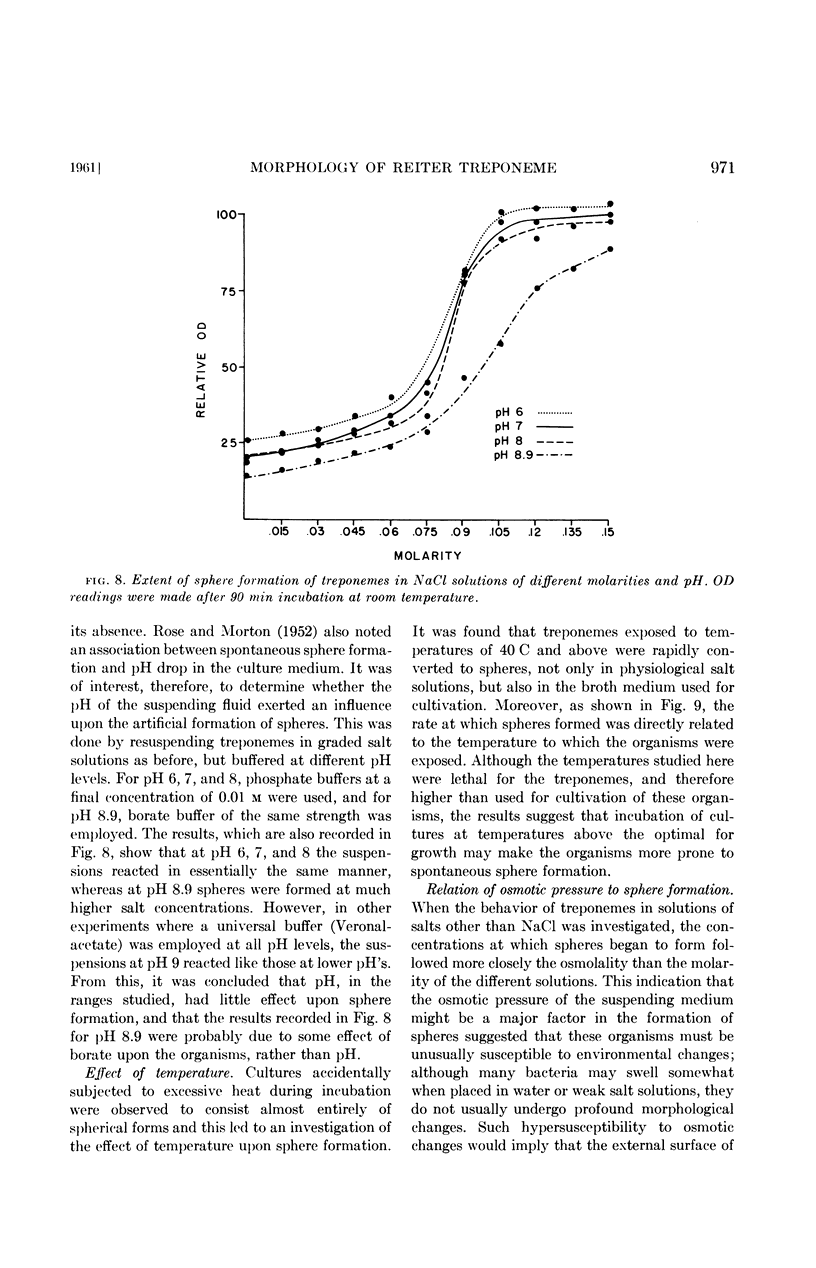

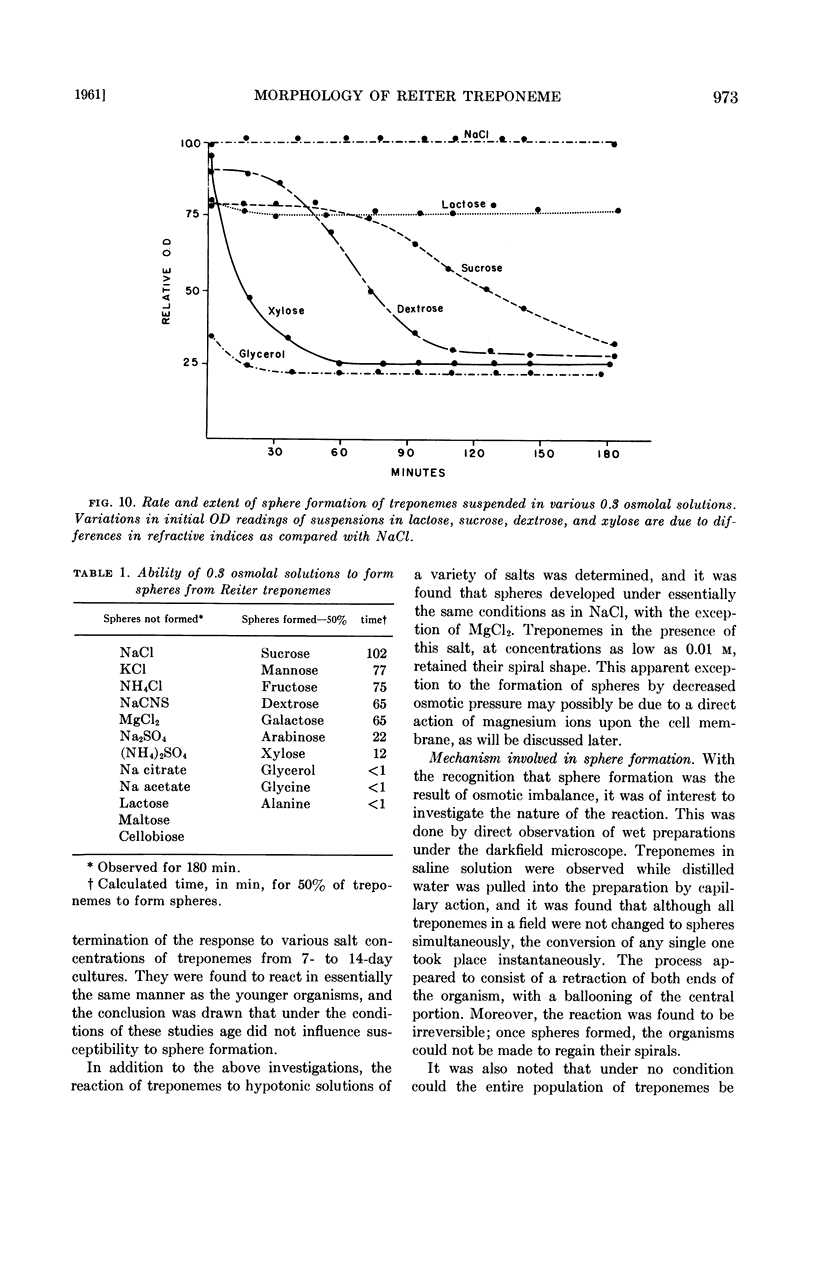
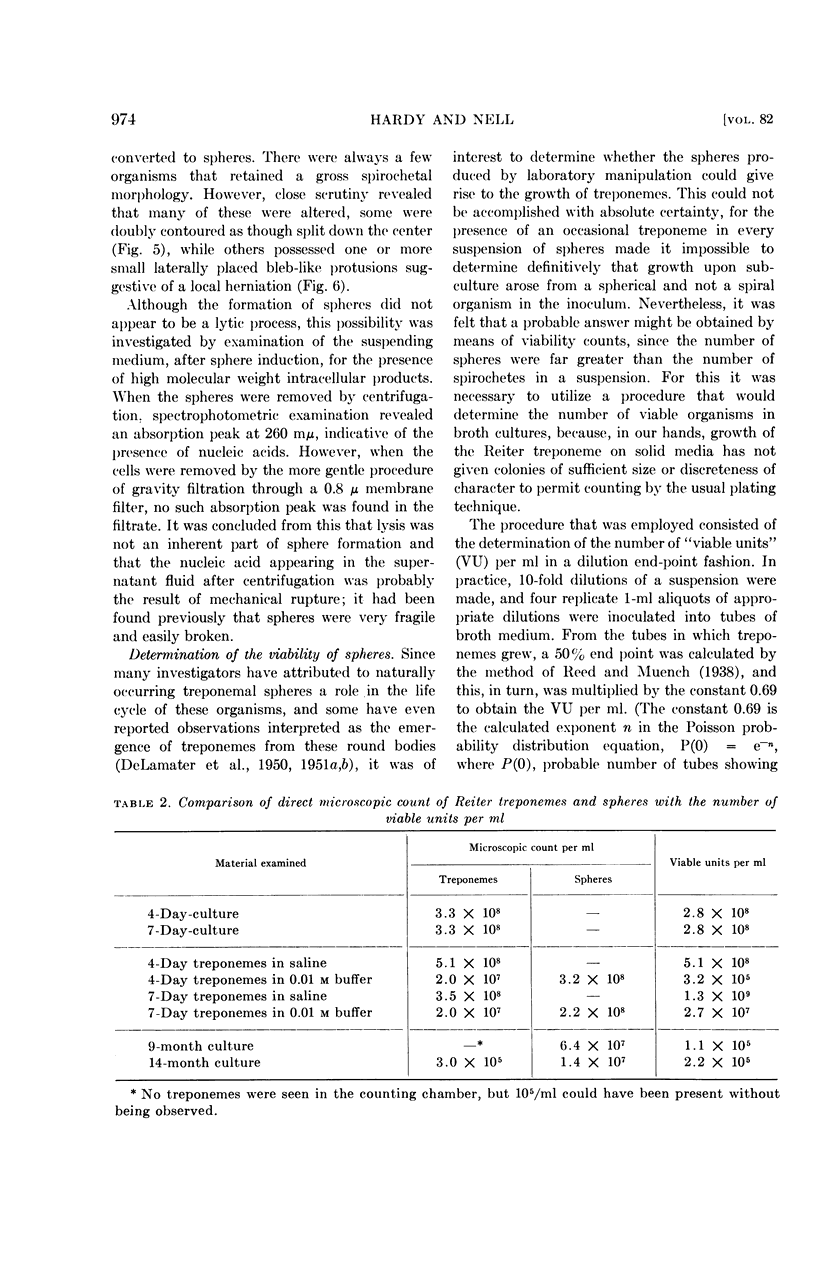
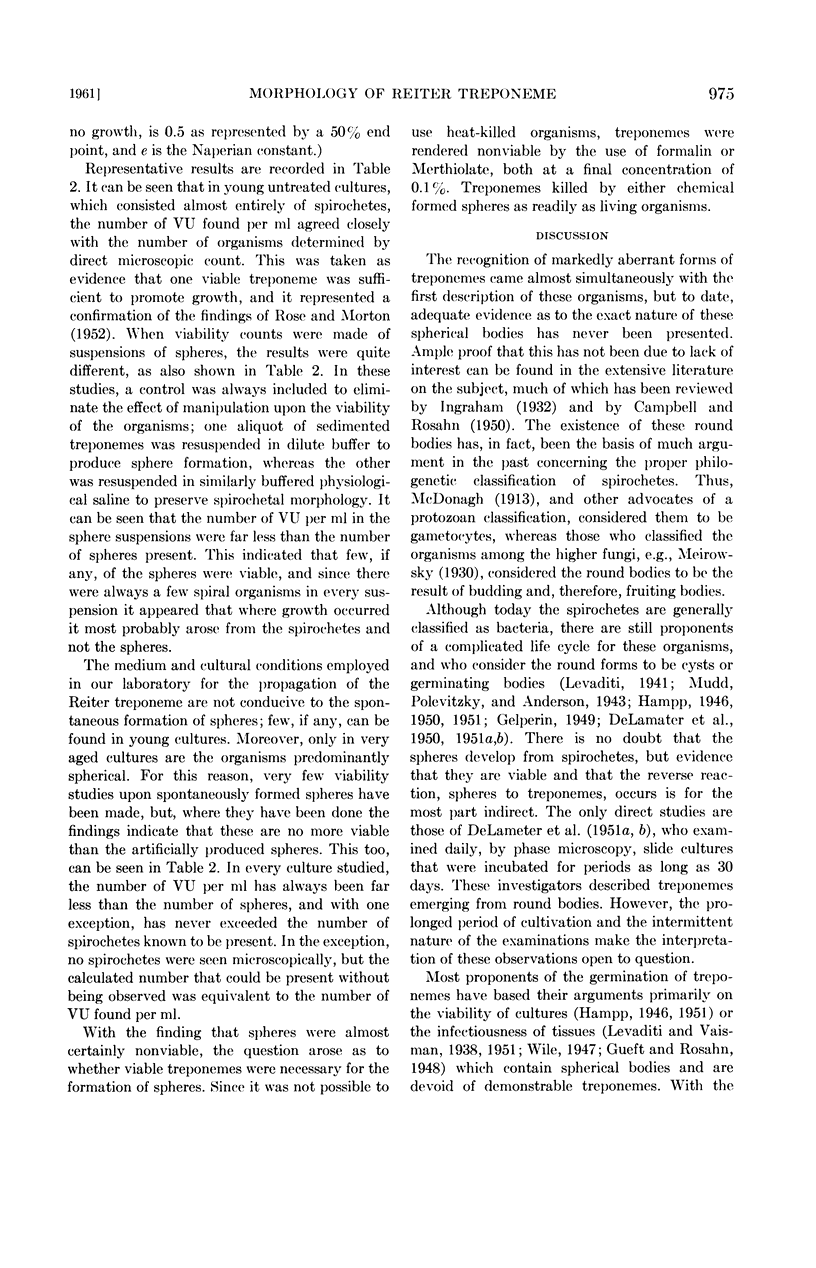
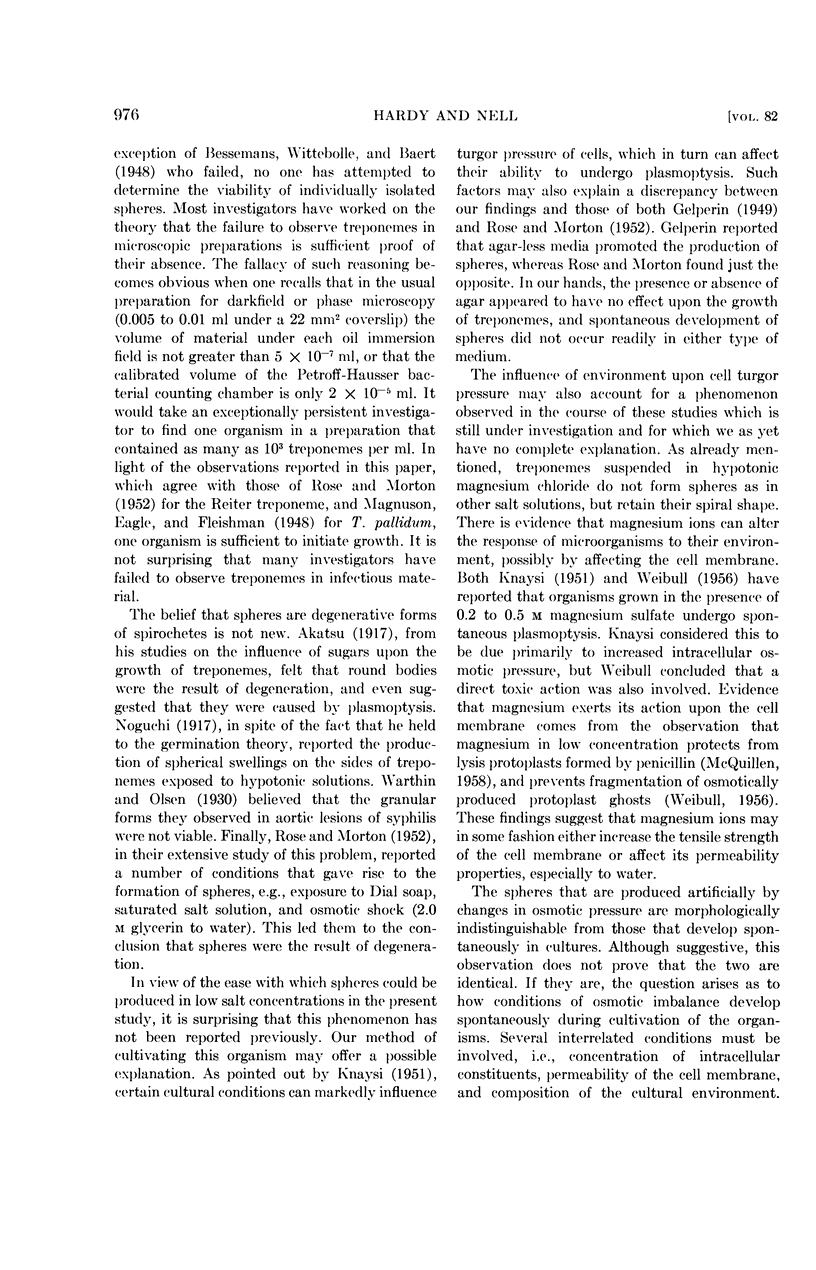
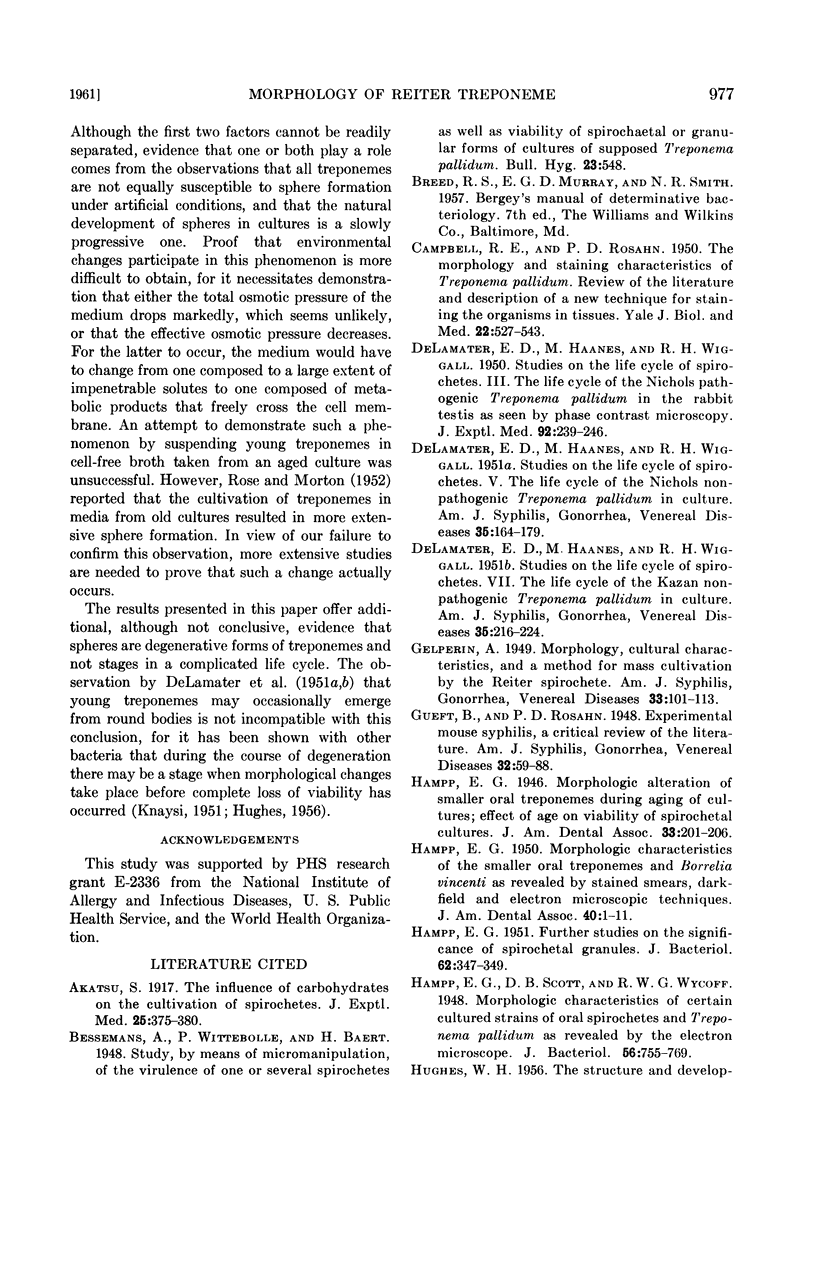
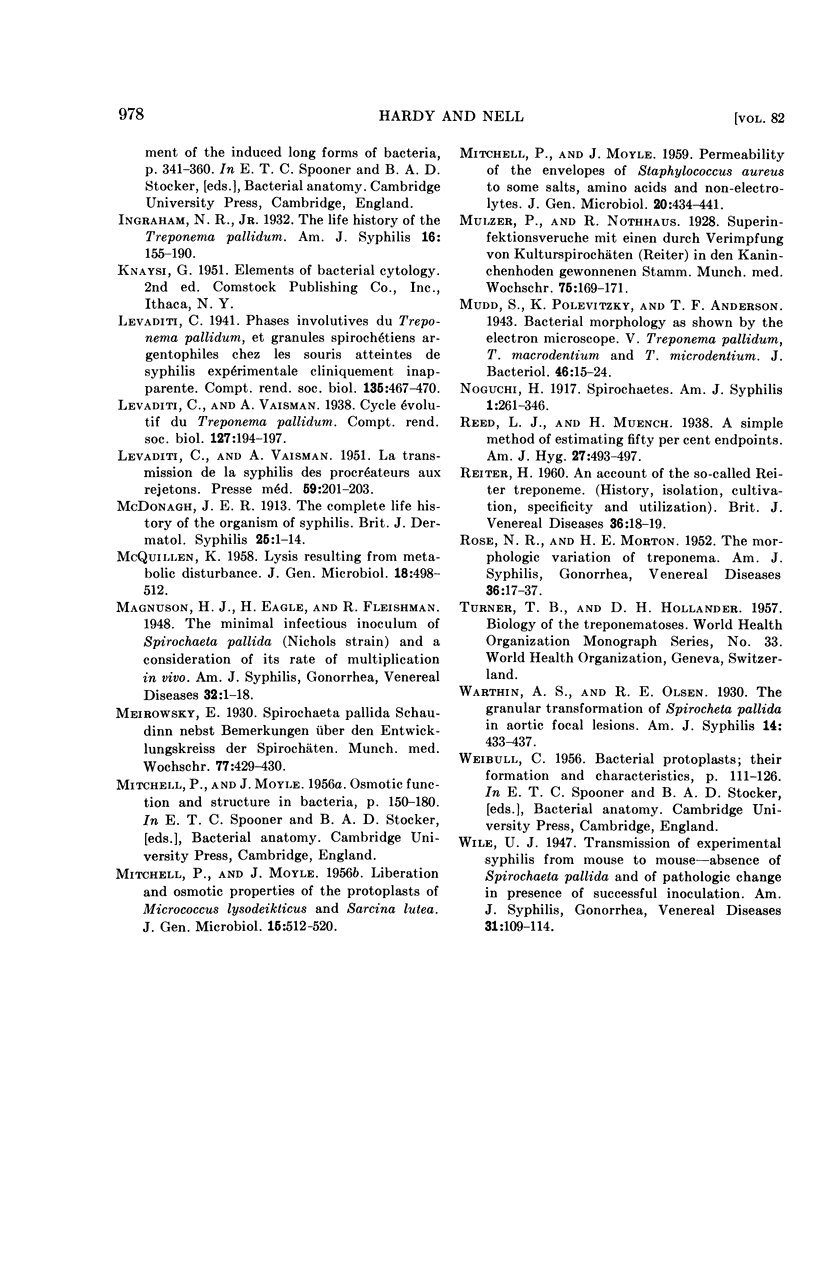
Images in this article
Selected References
These references are in PubMed. This may not be the complete list of references from this article.
- CAMPBELL R. E., ROSAHN P. D. The morphology and staining characteristics of the Treponema pallidum. Review of the literature and description of a new technique for staining the organism in tissues. Yale J Biol Med. 1950 Jul;22(6):527–543. [PMC free article] [PubMed] [Google Scholar]
- DeLAMATER E. D., HAANES M., WIGGALL R. H. Studies on the life cycle of spirochetes. VII. The life cycle of the Kazan nonpathogenic Treponema pallidum in culture. Am J Syph Gonorrhea Vener Dis. 1951 May;35(3):216–224. [PubMed] [Google Scholar]
- DeLAMATER E. D., WIGGALL R. H., HAANES M. Studies on the life cycle of spirochetes; the life cycle of the Nichols pathogenic Treponema pallidum in the rabbit testis as seen by phase contrast microscopy. J Exp Med. 1950 Sep;92(3):239–246. doi: 10.1084/jem.92.3.239. [DOI] [PMC free article] [PubMed] [Google Scholar]
- HAMPP E. G. Further studies on the significance of spirochetal granules. J Bacteriol. 1951 Sep;62(3):347–349. doi: 10.1128/jb.62.3.347-349.1951. [DOI] [PMC free article] [PubMed] [Google Scholar]
- HAMPP E. G. Morphologic characteristics of the smaller oral treponemes and Borrelia vincenti as revealed by stained smear, darkfield and electron microscopic technics. J Am Dent Assoc. 1950 Jan;40(1):1-11, illust. doi: 10.14219/jada.archive.1950.0019. [DOI] [PubMed] [Google Scholar]
- Hampp E. G., Scott D. B., Wyckoff R. W. Morphologic Characteristics of Certain Cultured Strains of Oral Spirochetes and Treponema pallidum as Revealed by the Electron Microscope. J Bacteriol. 1948 Dec;56(6):755–769. doi: 10.1128/jb.56.6.755-769.1948. [DOI] [PMC free article] [PubMed] [Google Scholar]
- LEVADITI C., VAISMAN A. La transmission de la syphilis des procréateurs aux rejetions. Presse Med. 1951 Feb 17;59(11):201–203. [PubMed] [Google Scholar]
- MITCHELL P., MOYLE J. Liberation and osmotic properties of the protoplasts of Micrococcus lysodeikticus and Sarcina lutea. J Gen Microbiol. 1956 Dec;15(3):512–520. doi: 10.1099/00221287-15-3-512. [DOI] [PubMed] [Google Scholar]
- MITCHELL P., MOYLE J. Permeability of the envelopes of Staphylococcus aureus to some salts, amino acids, and non-electrolytes. J Gen Microbiol. 1959 Apr;20(2):434–441. doi: 10.1099/00221287-20-2-434. [DOI] [PubMed] [Google Scholar]
- McQUILLEN K. Lysis resulting from metabolic disturbance. J Gen Microbiol. 1958 Apr;18(2):498–512. doi: 10.1099/00221287-18-2-498. [DOI] [PubMed] [Google Scholar]
- Mudd S., Polevitzky K., Anderson T. F. Bacterial Morphology as shown by the Electron Microscope: V. Treponema pallidum, T. macrodentium and T. microdentium. J Bacteriol. 1943 Jul;46(1):15–24. doi: 10.1128/jb.46.1.15-24.1943. [DOI] [PMC free article] [PubMed] [Google Scholar]
- REITER H. An account of the so-called Reiter treponeme (history, isolation, cultivation, specificity, and utilization). Br J Vener Dis. 1960 Mar;36:18–20. doi: 10.1136/sti.36.1.18. [DOI] [PMC free article] [PubMed] [Google Scholar]
- ROSE N. R., MORTON H. E. The morphologic variation of treponema. Am J Syph Gonorrhea Vener Dis. 1952 Jan;36(1):17–37. [PubMed] [Google Scholar]



